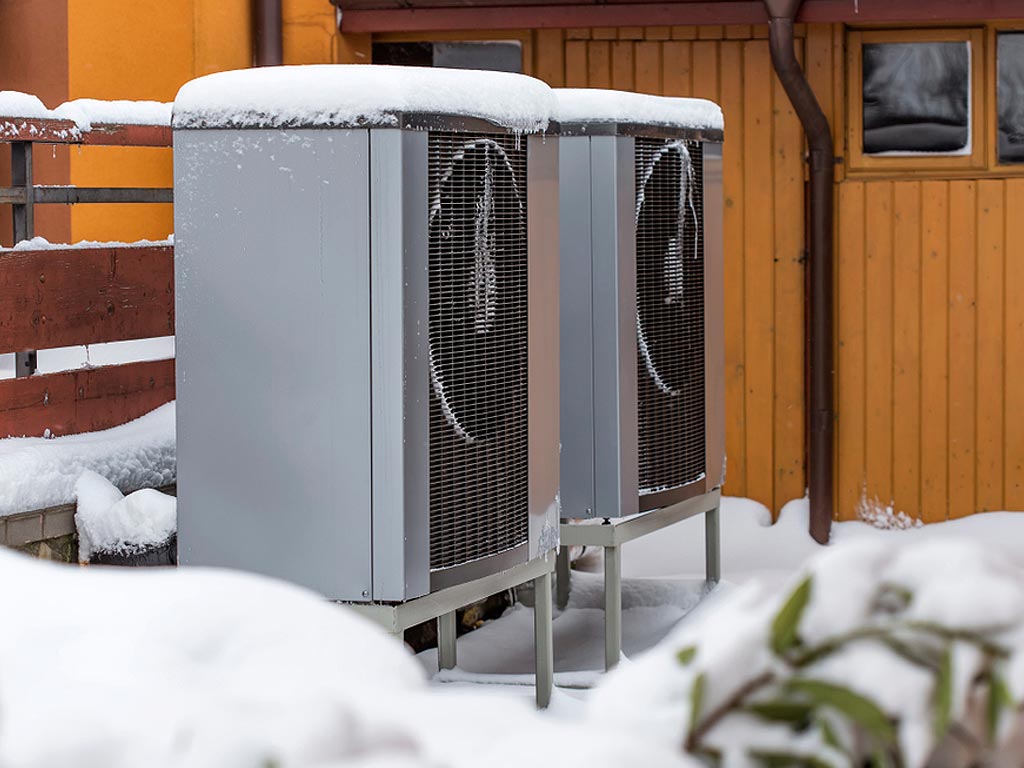HVAC issues are always stressful. Not only is the HVAC system running through your entire house starting to make odd noises or act up, but a sudden, icy plummet in temperature also adds to the stress of the moment. There are aspects of your HVAC system you need to investigate as the weather turns cold. These are your heat pump and your emergency heat. Learn these essential HVAC facts to keep your heat pump functioning this winter.

Firs, find out if your system has a heat pump instead of more traditional parts. Once you know what you’re working with, you can start to break down the problems. One of the more common issues with heat pumps is when the outside unit starts to ice up.
Almost every HVAC system has an outdoor unit, and it can develop a few issues unique to each of the seasons. Keeping it clear of leaves and debris is crucial during spring and autumn. Removing signs of dens or critters can keep it running better during the summer. But when it threatens to ice over in winter, chipping away the ice and removing it yourself isn’t the right idea.
Is the heat pump switching to air conditioning mode for defrosting?
If the outdoor coils aren’t used and heated up periodically, they’re the most delicate part of the machine that’s vulnerable to icing. That’s why the device is designed to switch modes when they detect frost. If the coils are frozen, your unit probably has faulty sensors or relays, and you’ll need a technician.
Is the fan is moving?
Even though we generally associate fans with cool air, outdoor units need a working fan to provide moving air and to distribute heat. If the fan hasn’t turned on, even when it’s supposed to, the motor is dead or malfunctioning.
Another step you should undertake at the beginning of every winter is to have the refrigerant level checked. Different machines use slightly different chemicals, but all of them need refrigerant to stay running.
Playing around with your air conditioning settings is probably not on your to-do list. And that’s for the best: changing the settings often creates slow, incremental changes that are hard to measure. Making unknown changes and pushing buttons can also be surprisingly expensive.
What does emergency heat do?
Primarily, it’s a secondary heater function that you should only turn on if your first line of heat breaks. Most house heating systems rely on a heat pump. These pumps move air around, depending on the seasons so that you can adjust your home’s internal temperature. When it’s cold outside, your system also turns on a heat strip that adds more heat into the house. But once you flip on emergency heat, all of your home’s heat is coming from that heat strip.
When should you use emergency heat?
You should only turn on the function when the heater isn’t working as it should. Most systems are designed to know what combination of heat pump function and heat strip function heat your house without running up your electricity bill too far. Overriding the settings is a decision you should make only when the system isn’t doing its job.
Using emergency heat is expensive. Because it relies on the heat strip to generate all of the heat for your house instead of using air exchange, it needs a lot more electricity or gas to get the work done.
For more HVAC facts and servicing throughout the seasons, contact Kew Forest Plumbing & Heating to get answers or set a time for an inspection.










